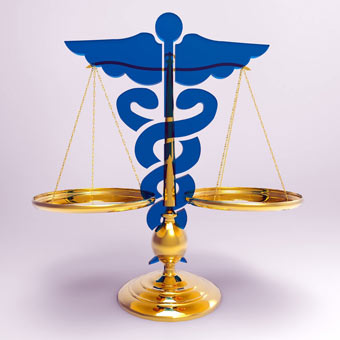Knee Dislocation – Painful, But Easily Treated
 Among the many painful injuries that can happen to the knee, one of the most painful is knee dislocation. Basically, this happens when the shin and thigh bones (tibia and femur) are not in the proper alignment, or out of place. These bones are held together by ligaments, and when the ligaments become torn, usually due to an injury of some sort, the bones can dislocate.
Among the many painful injuries that can happen to the knee, one of the most painful is knee dislocation. Basically, this happens when the shin and thigh bones (tibia and femur) are not in the proper alignment, or out of place. These bones are held together by ligaments, and when the ligaments become torn, usually due to an injury of some sort, the bones can dislocate.
Most often, knee dislocation is caused by a major trauma to the knee, such as sports injuries, falls and automobile accidents. It is pretty easy to tell if one has a dislocated knee, because the knee will look crooked following the injury. If the injured person is lucky, the knee will go back into place on its own, and the only remaining symptoms will be pain and swelling for a few days, which can be treated by RICE (Rest, Ice, Compression and Elevation).
Symptoms and Care of Knee Dislocation
The most common symptom of knee dislocation is pain. Other symptoms may include swelling, to the point where the patient may not be able to feel a pulse in their foot. The knee will look crooked or deformed, and there may even be numbness in the foot, especially if there is a lot of swelling. If you think that you may have a dislocated knee, it is important that you seek medical treatment right away. Take a trip to your local emergency room, where x-rays will be taken to ensure that it is a dislocation, and not something even more serious, such as a broken bone.
Other tests may include ultrasound or Doppler to see the level of blood flow through the leg arteries. Because it is possible that there could be nerve damage associated with a dislocated knee, the physician may also check for this, testing for numbness and ability to move.
Although there are some treatments that can be done at home, it is not a good idea to completely treat a knee dislocation yourself. Of course, you can ice it to help the pain and swelling until you can see a physician, who will probably have to put the knee back into place. There is almost always artery damage with knee dislocations, and surgery is necessary in 21% to 32% of all knee dislocations, usually with optimal results. Some patients do report chronic pain following the injury and surgery.
Following treatment by a physician, you will be told to rest the knee joint completely, and immobilization will probably be necessary to relieve knee pain. This is done by wearing a brace that will prevent bending of the knee, and usually must be used until the injury is healed. And, because there are often breaks involved with knee dislocations, it is often necessary to see a bone specialist once the dislocation has healed.
Knee dislocation is a common injury, and one that is treatable. But, it is also an injury that is avoidable in a lot of cases. For instance, if you avoid extreme sports that involve jumping from high places, you avoid risking knee dislocation, as well as a host of other injuries. Take care of yourself, and you will be less prone to knee dislocation and other injuries.
